Butterflies
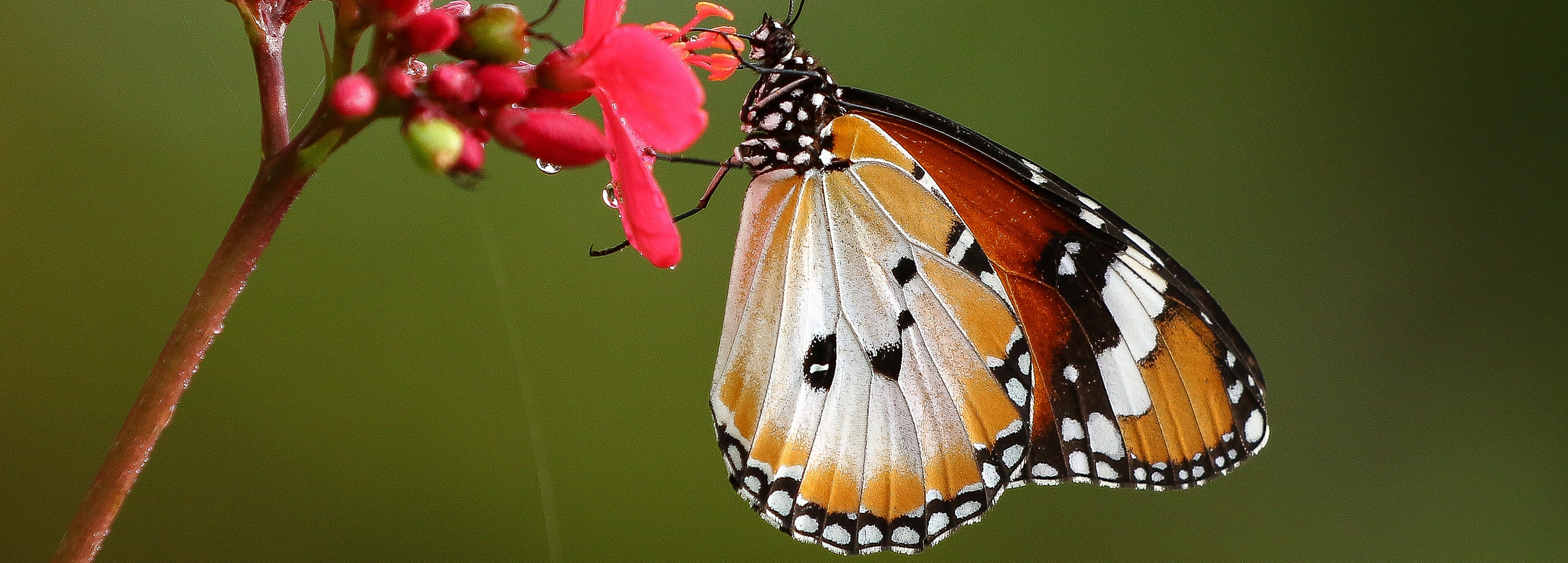
Photo: Plain Tiger (Danaus chrysippus) (Credit: Ong Chwee Sia)
Butterflies give colour and vibrancy to our parks and gardens and are also key pollinators of many plants. They have the typical four-stage insect life cycle with complete metamorphosis – egg, larva (caterpillar), pupa and adult.
Butterflies (and moths) are from the insect order Lepidoptera. They have wings with tiny scales, a pair of compound eyes and a long, coiled mouthpart called a proboscis. The wingless caterpillars feed mainly on plants, but some species are carnivorous. Meanwhile, the winged adults feed predominantly on plant nectar, providing a role as pollinators in the process.
Host Plants: Often, butterflies lay their eggs on specific host plants, which provide important food and nutrition for their caterpillars. Holes on the leaves of plants are a sure sign that butterflies are breeding. Knowing the host plants of each butterfly species is the key to increasing the variety of butterflies in our gardens.
Here are some of the butterflies which you can expect to see in Jurong Lake Gardens!
Family Nymphalidae
Plain Tiger
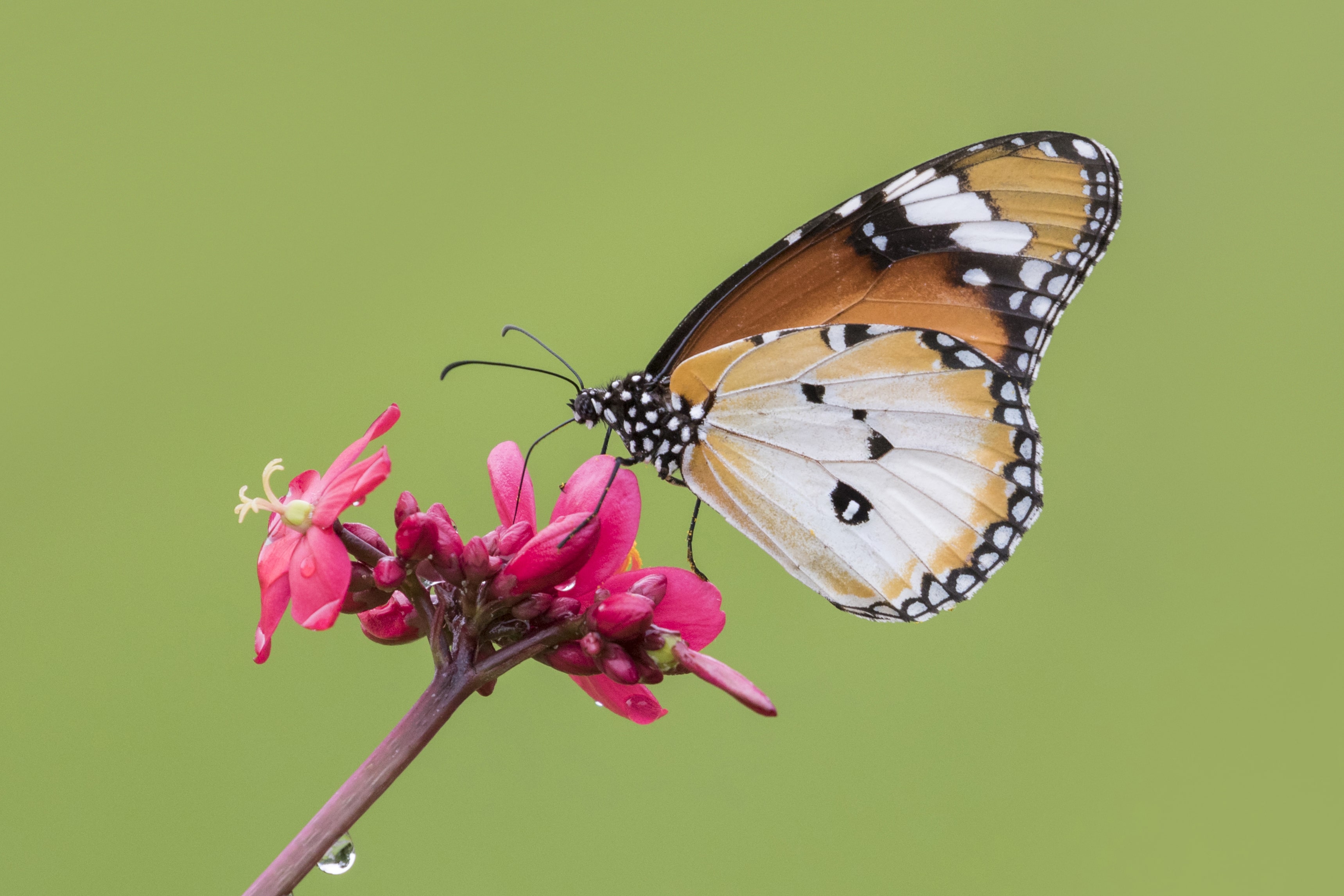
Photo credit: Loke Peng Fai
|
Scientific name: |
Danaus chrysippus |
|
Common name: |
Plain Tiger |
|
Family: |
Nymphalidae |
What does it look like?
A very common butterfly in Jurong Lake Gardens, the Plain Tiger has rich orange forewings with a black border and white spots. Its hindwings are white with black spots. There is also a less common orange form that has fully orange hind wings. It flies slowly while feeding on its favorite nectaring plants.
Host Plant: Giant Milkweed (Calotrops gigantea)
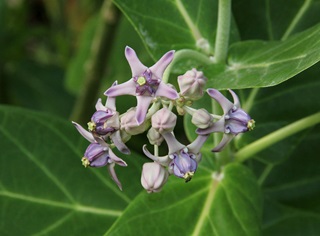
Photo credits: Arthur Ng, NParks Flora&FaunaWeb
Common Tiger
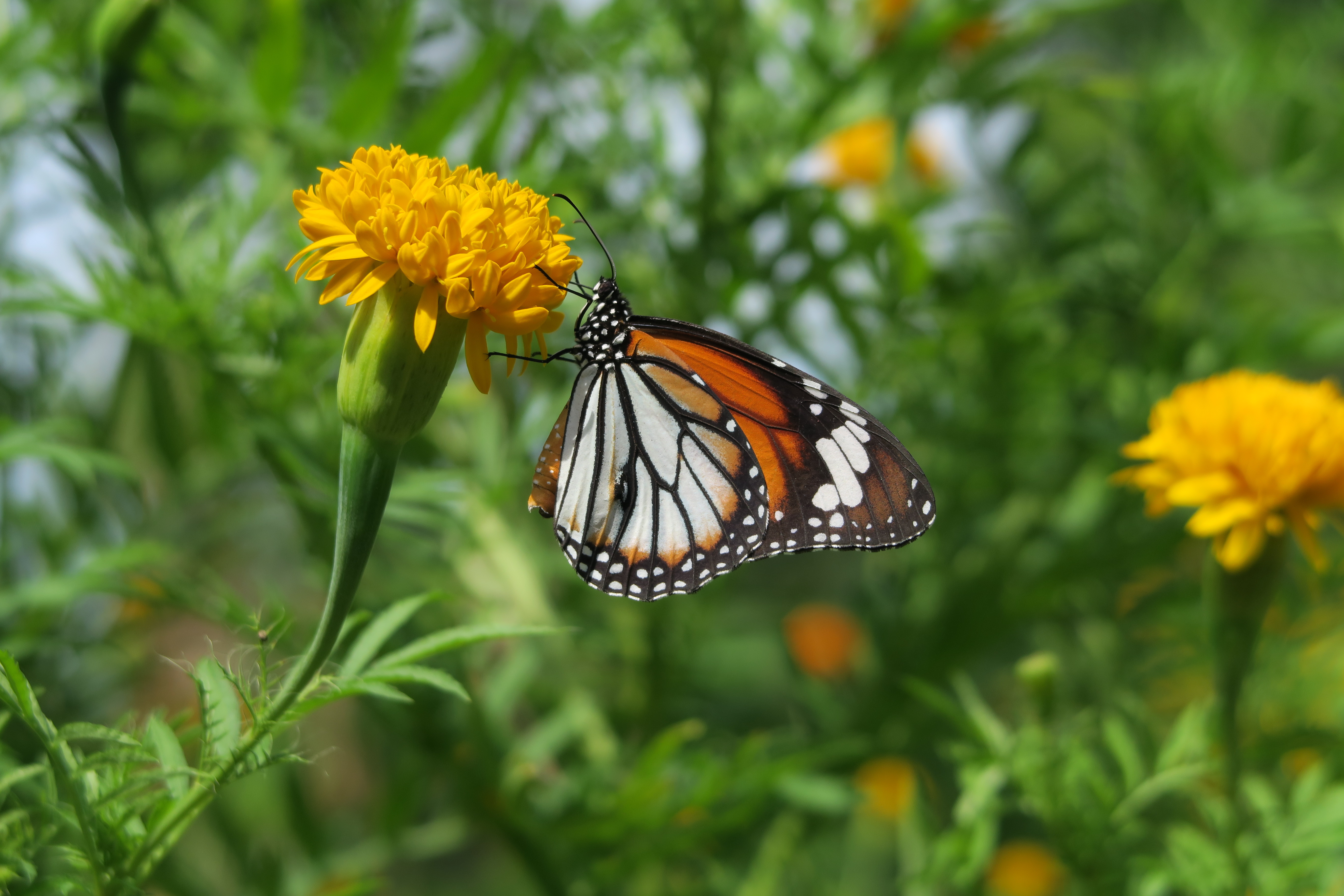
Photo credit: Ruth Tan (NParks)
|
Scientific name: |
Danaus genutia |
|
Common name: |
Common Tiger |
|
Family: |
Nymphalidae |
What does it look like?
It has similar colouration to the Plain Tiger but the veins of the Common Tiger are strongly marked with black. The white form has white hindwings with an orange-tinged border, while the orange form has hindwings with the same orange as the forewings.
Host Plant: Coated Swallow-Wort (Cynanchum ovalifolium)
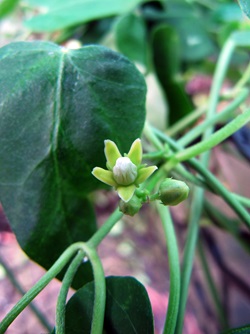
Photo credits: Vicky Lim Yen Ngoh, NParks Flora&FaunaWeb
Blue Glassy Tiger
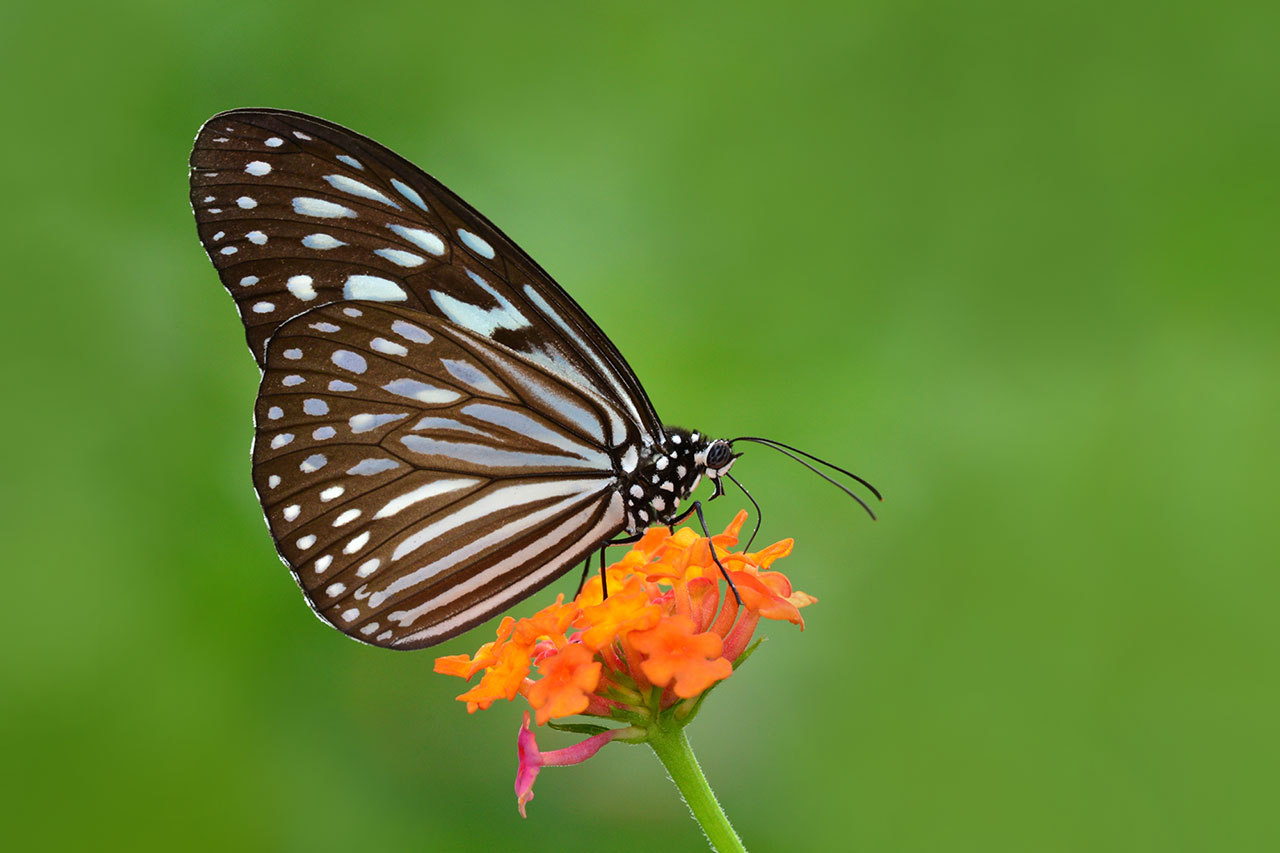
Photo credit: Khew Sin Khoon
|
Scientific name: |
Ideopsis vulgaris |
|
Common name: |
Blue Glassy Tiger |
|
Family: |
Nymphalidae |
What does it look like?
The Blue Glassy Tiger has bluish grey wings that are lined with many black stripes, just like the feline it is named after. It is difficult to tell it apart from the closely related Dark Glassy Tiger (Parantica agleoides) while in flight. A reliable way to identify a Blue Glassy Tiger is the presence of a dark bar on the forewing, which the Dark Glassy Tiger lacks. It is more often found in close proximity to wetlands and mangrove habitats.
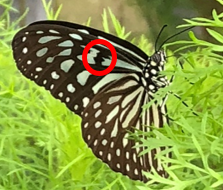
The Blue Glassy Tiger has a dark tranverse bar on the forewing cell. Photo credit: Daniel Yee
Host Plant: Vincetoxicum flexuosum
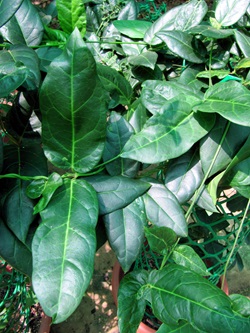
Photo credits: Vicky Lim Yen Ngoh, NParks Flora&FaunaWeb
Leopard
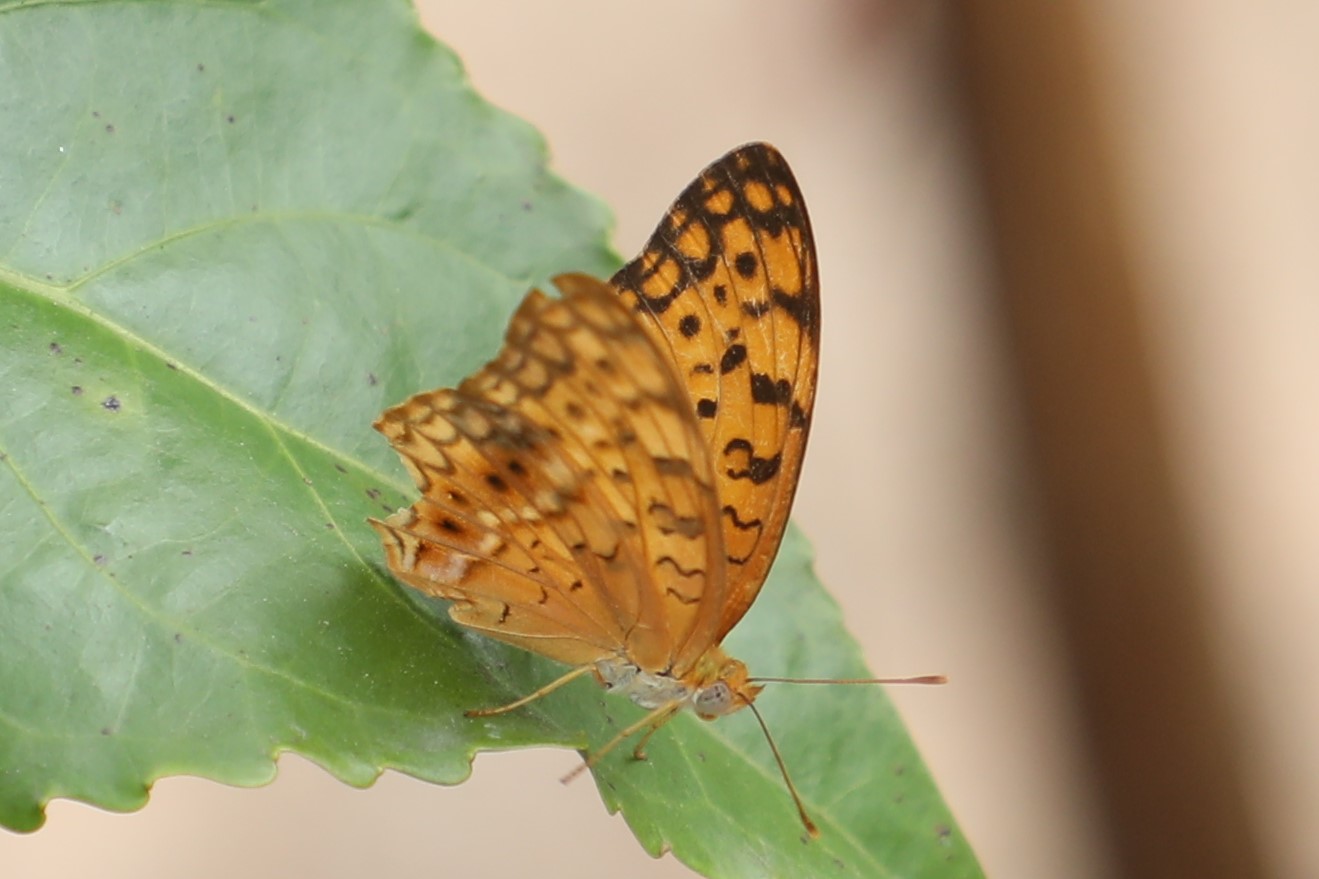
Photo credit: Ruth Tan (NParks)
|
Scientific name: |
Phalanta phalantha |
|
Common name: |
Leopard |
|
Family: |
Nymphalidae |
What does it look like?
The upperside of the Leopard is, like the large feline it is named after, a rich orange brown ornamented with black spots and streaks. Its underside is a lighter orange with a purplish sheen when lighted from the side.
Host Plant: Batoko Plum (Flacourtia inermis)
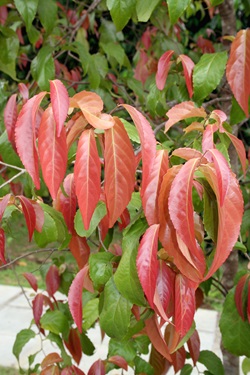
Photo credits: Patricia Yap, NParks Flora&FaunaWeb
Chocolate Pansy

Photo credit: Khew Sin Khoon
|
Scientific name: |
Junonia hedonia |
|
Common name: |
Chocolate Pansy |
|
Family: |
Nymphalidae |
What does it look like?
Resembling the colour of chocolate, its upper wings are orange brown with several dark brown bands and small eyespots. Compared to the Peacock Pansy (Junonia almana), it has smaller and more numerous eye spots. It flies in the usual gliding manner of the genus Junonia and tends to sunbathe with their wings wide open in sunny weather.
Host Plant: Creeping Ruellia (Ruellia repens)
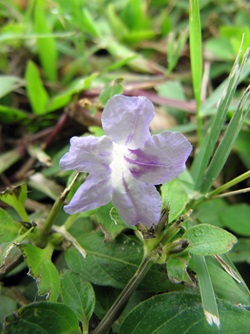
Photo credits: Vicky Lim Yen Ngoh, NParks Flora&FaunaWeb
Grey Pansy
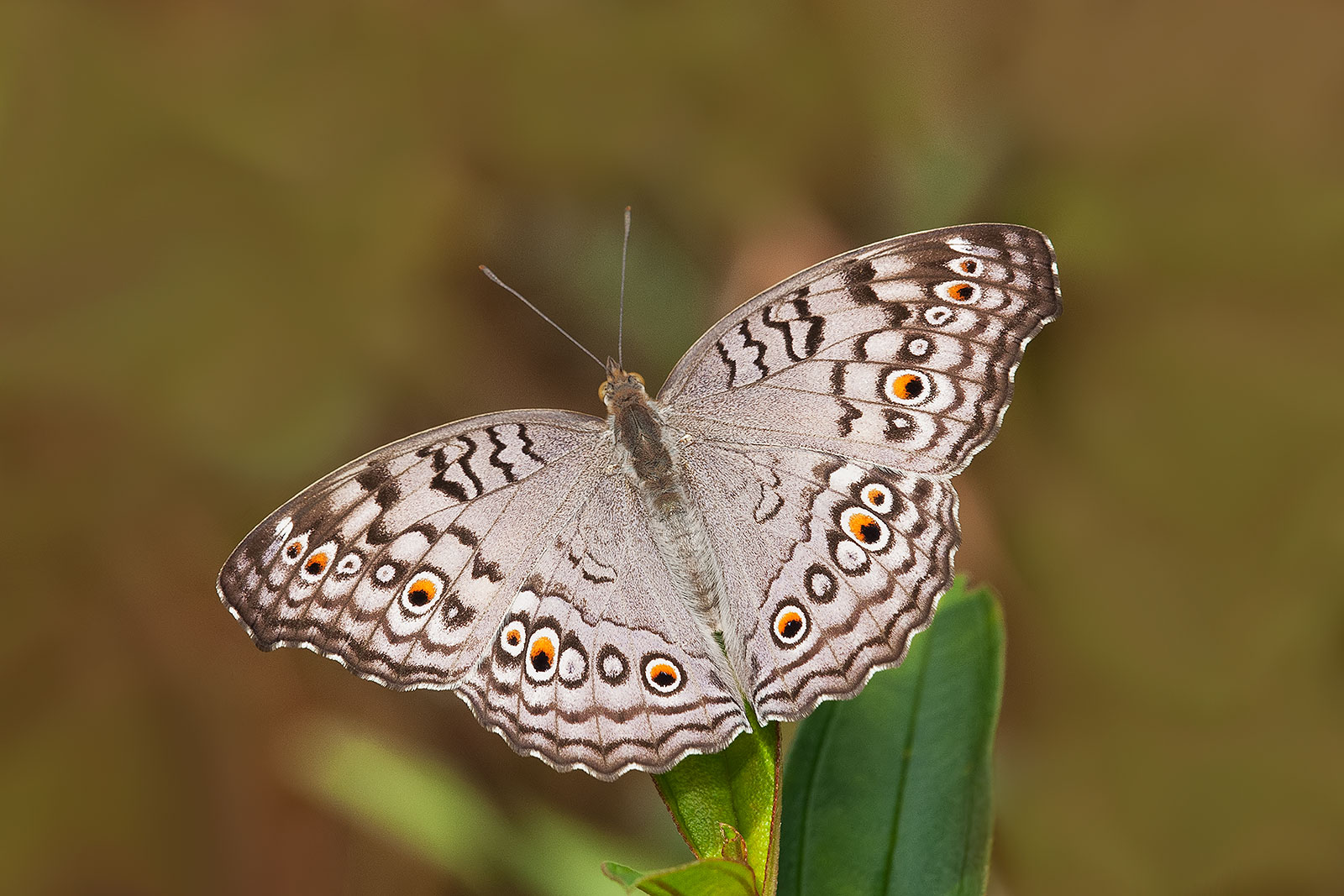
Photo credit: Khew Sin Khoon
|
Scientific name: |
Junonia atlites |
|
Common name: |
Grey Pansy |
|
Family: |
Nymphalidae |
What does it look like?
Pansies have a characteristic flap-glide flight pattern. This species has a pale grey upperside with numerous eyespots along the wing margins. The underside is much paler with very faint markings.
Host Plant: Blue Pussyleaf (Nelsonia canescens)
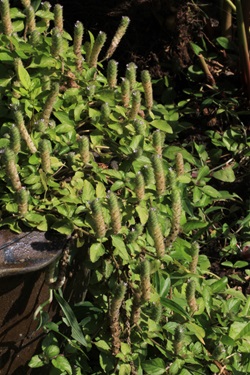
Photo credits: Jessica Teo, NParks Flora&FaunaWeb
Peacock Pansy

Photo credit: Perlyn Chng
|
Scientific name: |
Junonia almana |
|
Common name: |
Peacock Pansy |
|
Family: |
Nymphalidae |
What does it look like?
It gets its name from its bright orange upperside with prominent eyespots on its hindwings, resembling a peacock’s tail feather. The undersides are paler, though the eyespots remain prominent.
Host Plant: Creeping Ruellia (Ruellia repens)
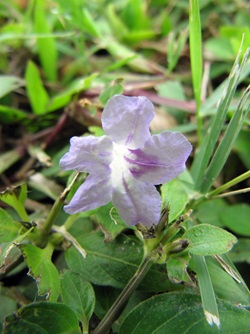
Photo credits: Vicky Lim Yen Ngoh, NParks Flora&FaunaWeb
Blue Pansy
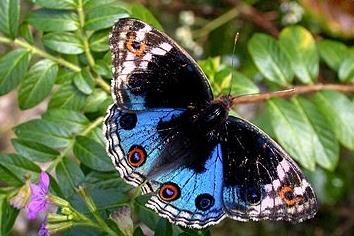
Male. Photo credit: Khew Sin Khoon, NParks Flora&FaunaWeb
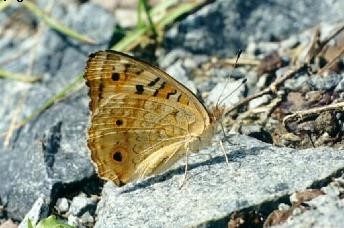
Underside. Photo credit: Khew Sin Khoon, NParks Flora&FaunaWeb
|
Scientific name: |
Junonia orithya |
|
Common name: |
Blue Pansy |
|
Family: |
Nymphalidae |
What does it look like?
The male is much flashier thanks to its bright blue hindwings, each with an orange red eyespot. The female is a much duller brown on the upperside. The undersides of both sexes are pale brown with the typical markings and eyespots from this butterfly family.
Host Plant: Coromandel (Asystasia gangetica)
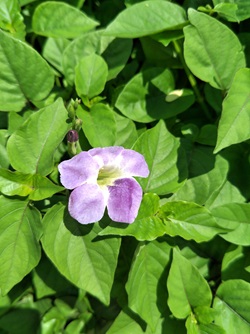
Photo credits: Pauline Tay, NParks Flora&FaunaWeb
Short Banded Sailor
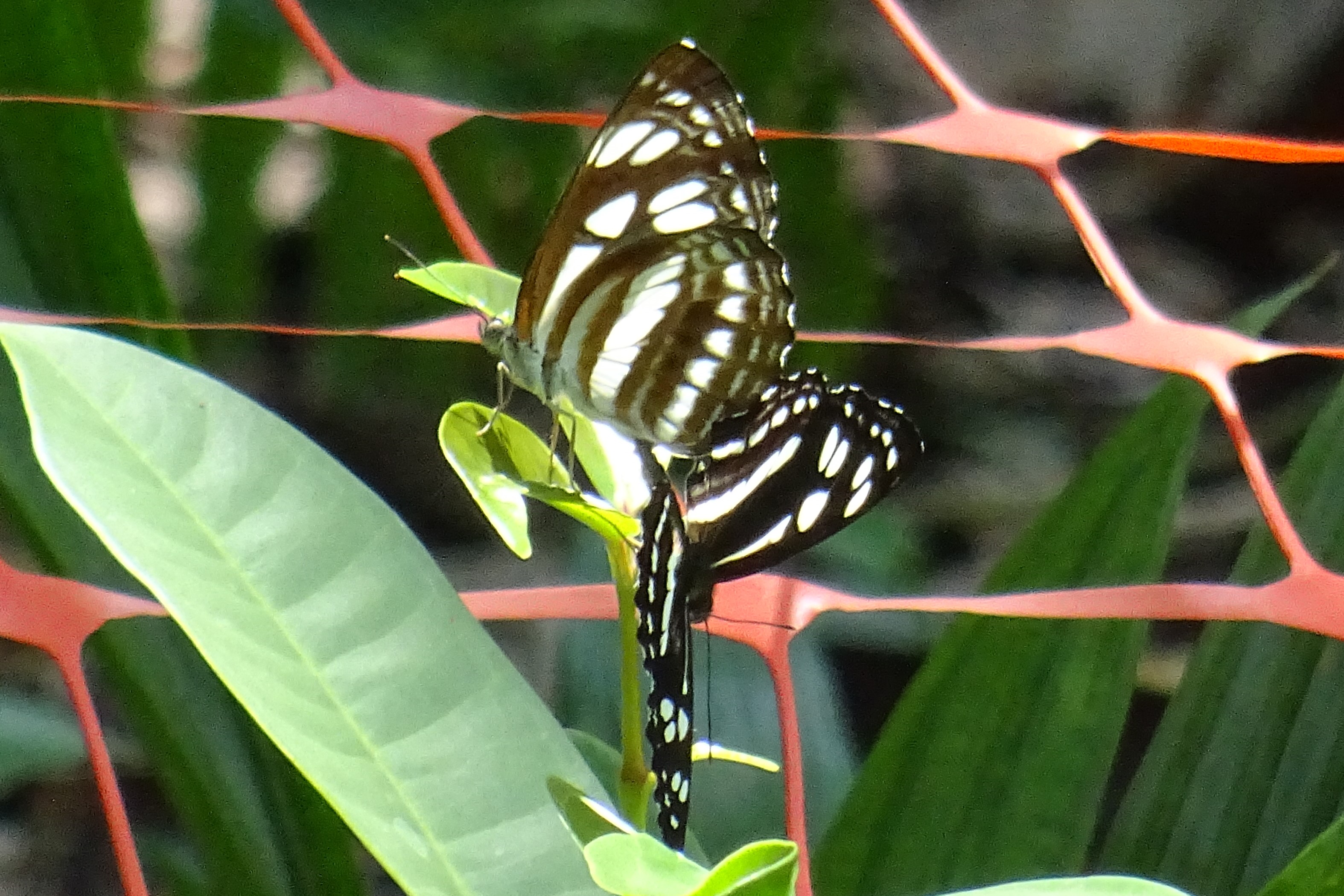
Photo credit: Ruth Tan (NParks)
|
Scientific name: |
Phaedyma columella |
|
Common name: |
Short Banded Sailor |
|
Family: |
Nymphalidae |
What does it look like?
The underside of its wings is a rich grey brown with white stripes arranged in a similar manner to the upperside. Often confused with the Common Sailor (Neptis hylas), it is the larger of the two and has slightly different white markings.
Host Plant: Angsana (Pterocarpus indicus)
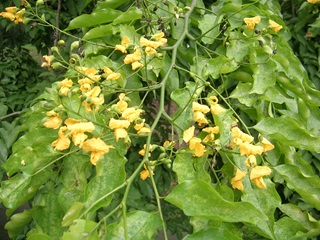
Photo credits: Boo Chih Min, NParks Flora&FaunaWeb
Tawny Coster
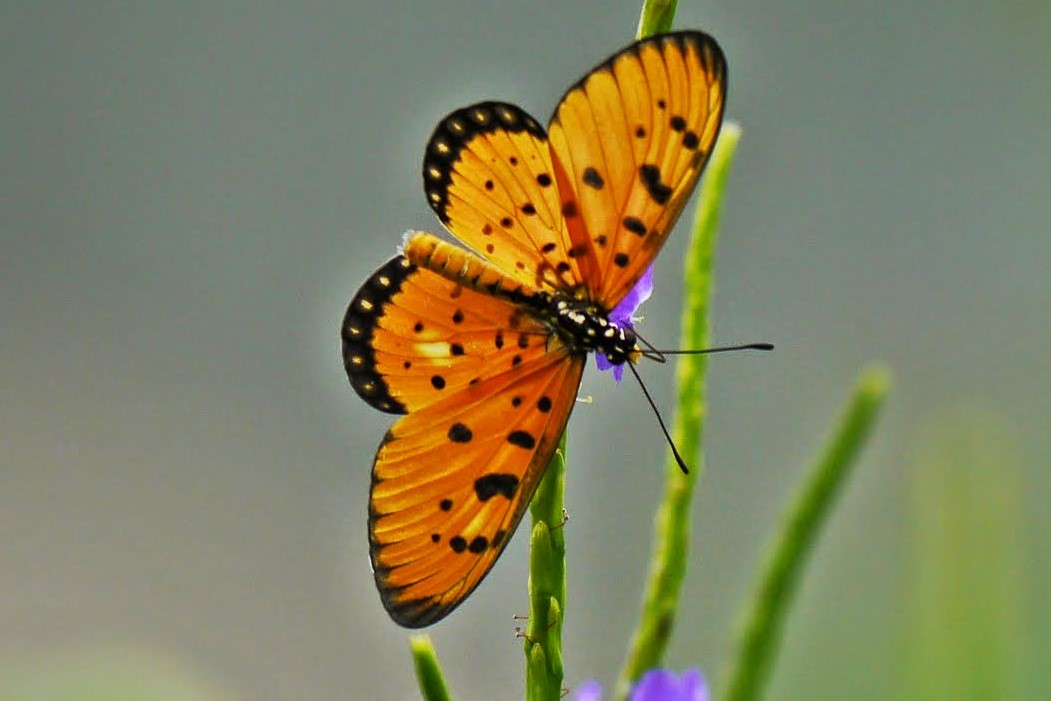
Photo credit: Perlyn Chng
|
Scientific name: |
Acraea terpsicore |
|
Common name: |
Tawny Coster |
|
Family: |
Nymphalidae |
What does it look like?
It has an orange upperside with black spots and a narrow black hindwing border. Underneath, it is a slightly paler orange in the male and a tawny yellow in the female. It has white spots on its black thorax and hindwing borders. This butterfly flies sluggishly in a fluttering manner around plants of the passion fruit family.
Host Plant: Plants from the Passion Flower family (Passifloraceae) such as Passion Fruit (Passiflora edulis)
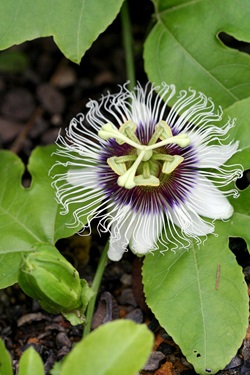
Photo credits: Patricia Yap, NParks Flora&FaunaWeb
Bush Browns

Dark Brand Bush Brown (Mycalesis mineus). Photo credit: Joy Wong (NParks)
|
Scientific name: |
Mycalesis sp. |
|
Common name: |
Bush Brown |
|
Family: |
Nymphalidae |
How do they look like?
Bush Browns are a collection of butterfly species from the genus Mycalesis that is rather common in Singapore. Pictured above is the Dark Brand Bush Brown, a dark greyish brown butterfly with an underside which features eyespots and a white stripe on its forewings and hindwings. Bush Browns generally look similar and identification of the different species involves comparing the position and patterns of the eyespots and streaks.
Host Plant: Cow Grass (Axonopus compressus)
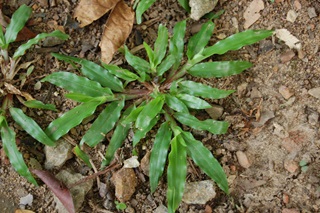
Photo credits: Boo Chih Min, NParks Flora&FaunaWeb
Family Pieridae
Grass Yellows
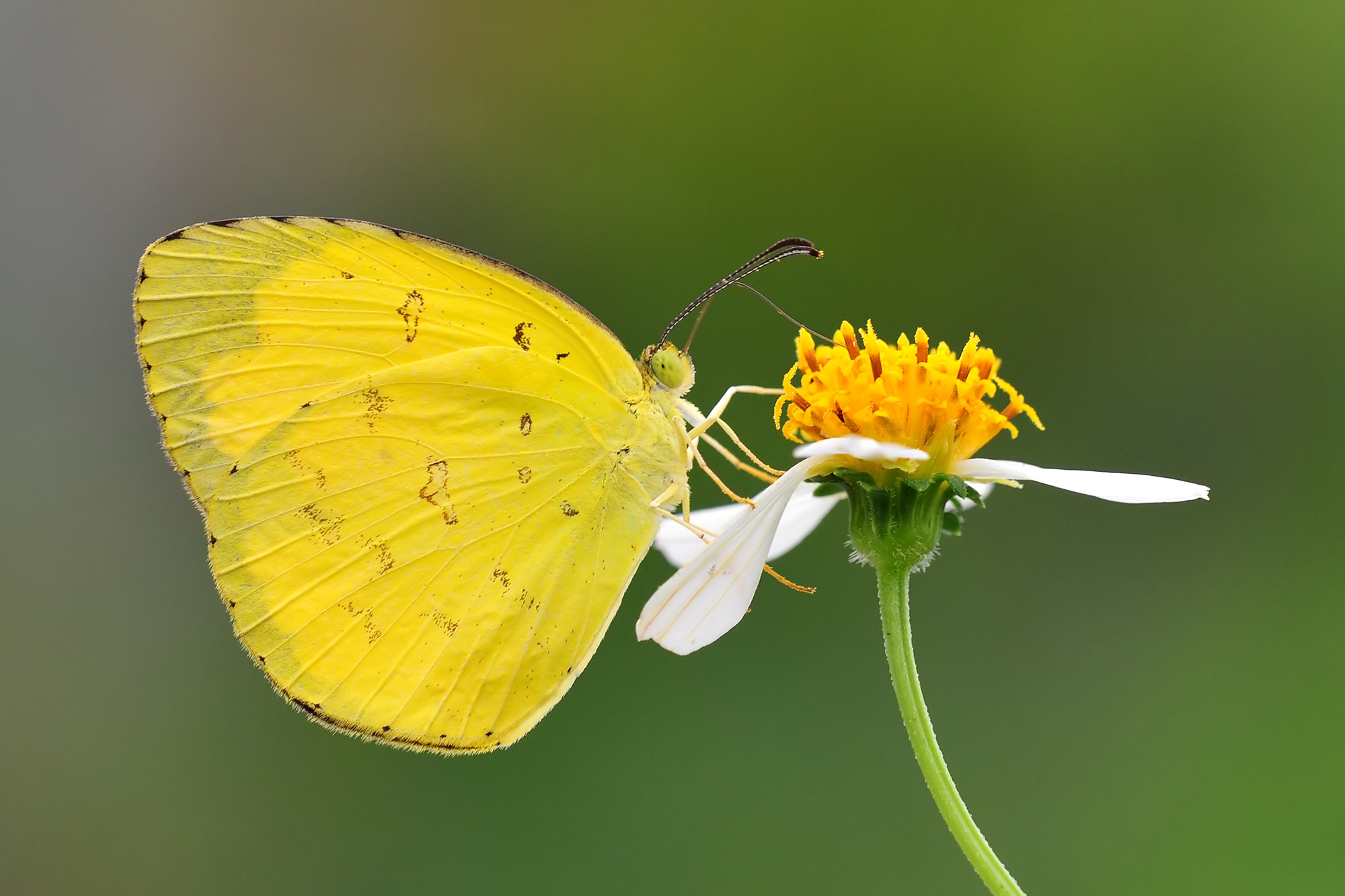
Common Grass Yellow (Eurema hecabe). Photo credit: Khew Sin Khoon
|
Scientific name: |
Eurema sp. |
|
Common name: |
Grass Yellow |
|
Family: |
Pieridae |
What do they look like?
Grass yellows are butterflies from the genus Eurema and consist of six species of butterflies with bright yellow wings with black borders. They are told apart by the number of dark brown cell spots on the underside of the wing, but this can be quite a difficult task as they tend to fly restlessly and are alert when approached.
Host Plant: Many legumes including the Peacock Flower (Caesalpinia pulcherrima)
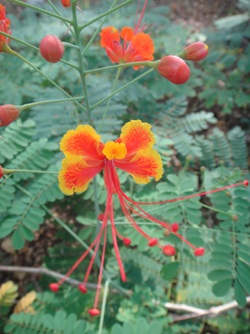
Photo credits: Jessica Teo, NParks Flora&FaunaWeb
Painted Jezebel
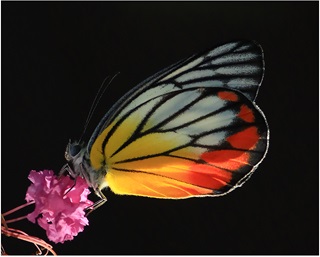
Photo credit: Ong Chwee Sia
|
Scientific name: |
Delias hyparete |
|
Common name: |
Painted Jezebel |
|
Family: |
Pieridae |
What does it look like?
Easily identified by its intense red and yellow colouration, the Painted Jezebel is white above, while the lower half of the hindwing is bright yellow with a bright red border. The wings of the females have veins that are more heavily dusted that those of the males. It is a common butterfly in our forests, mangroves, parks and gardens, and is often observed flying higher up near the crowns of trees.
Host Plant: Malayan Mistletoe (Dendropthoe pentandra)
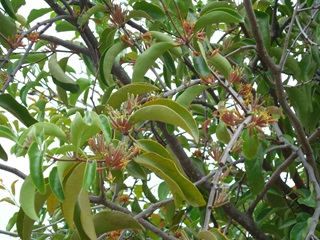
Photo credits: Gary LS Chua, NParks Flora&FaunaWeb
Fun fact: The Malayan Mistletoe is a parasitic plant that grows on another host tree to obtain its nutrients!
Lemon Emigrant
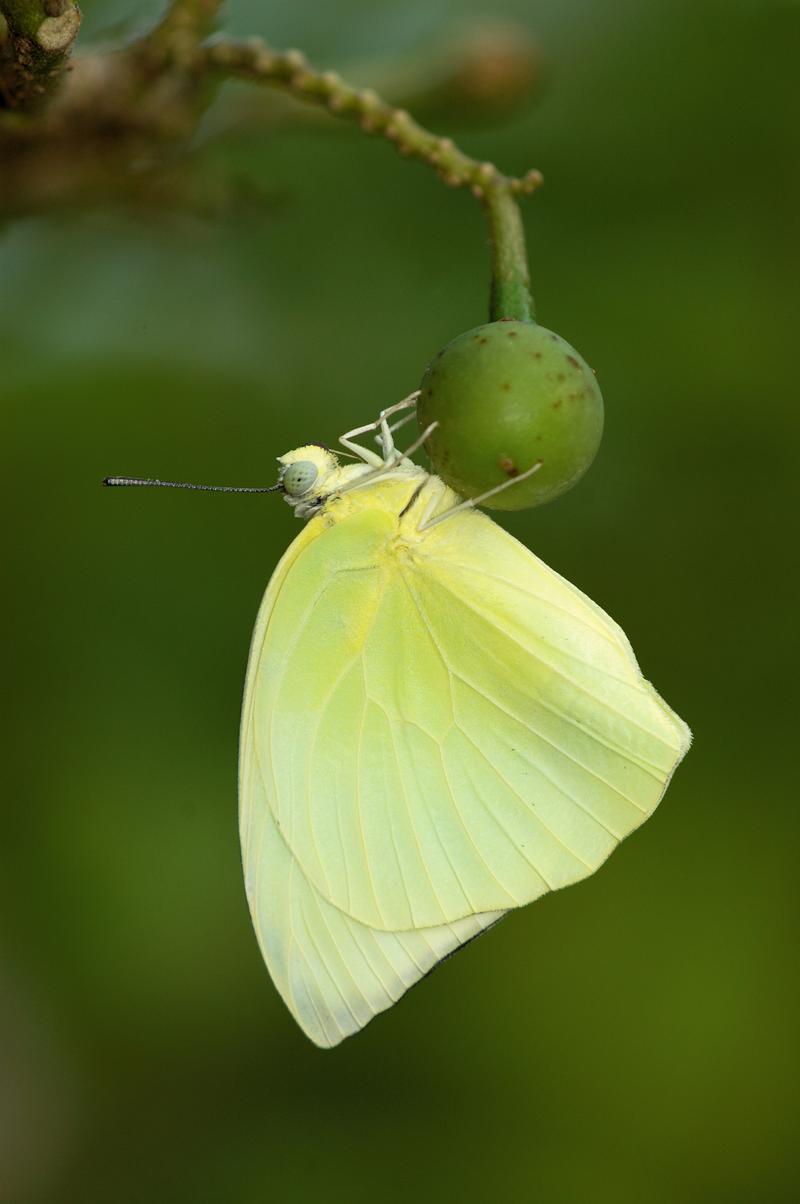
Photo credit: Nur Liyana Zolpakar
|
Scientific name: |
Catopsilia pomona |
|
Common name: |
Lemon Emigrant |
|
Family: |
Pieridae |
What does it look like?
This species has at least seven different ‘forms’, with its appearance ranging from pale green to orange yellow with varying widths of black borders on the upperside. Emigrants are fast-flying and are often observed zipping quickly from plant to plant.
Host Plant: Golden Shower Tree (Cassia fistula)
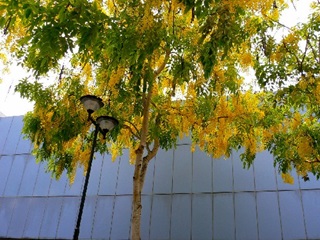
Photo credits: Keneric Ng Wei Sheng, NParks Flora&FaunaWeb
Orange Emigrant
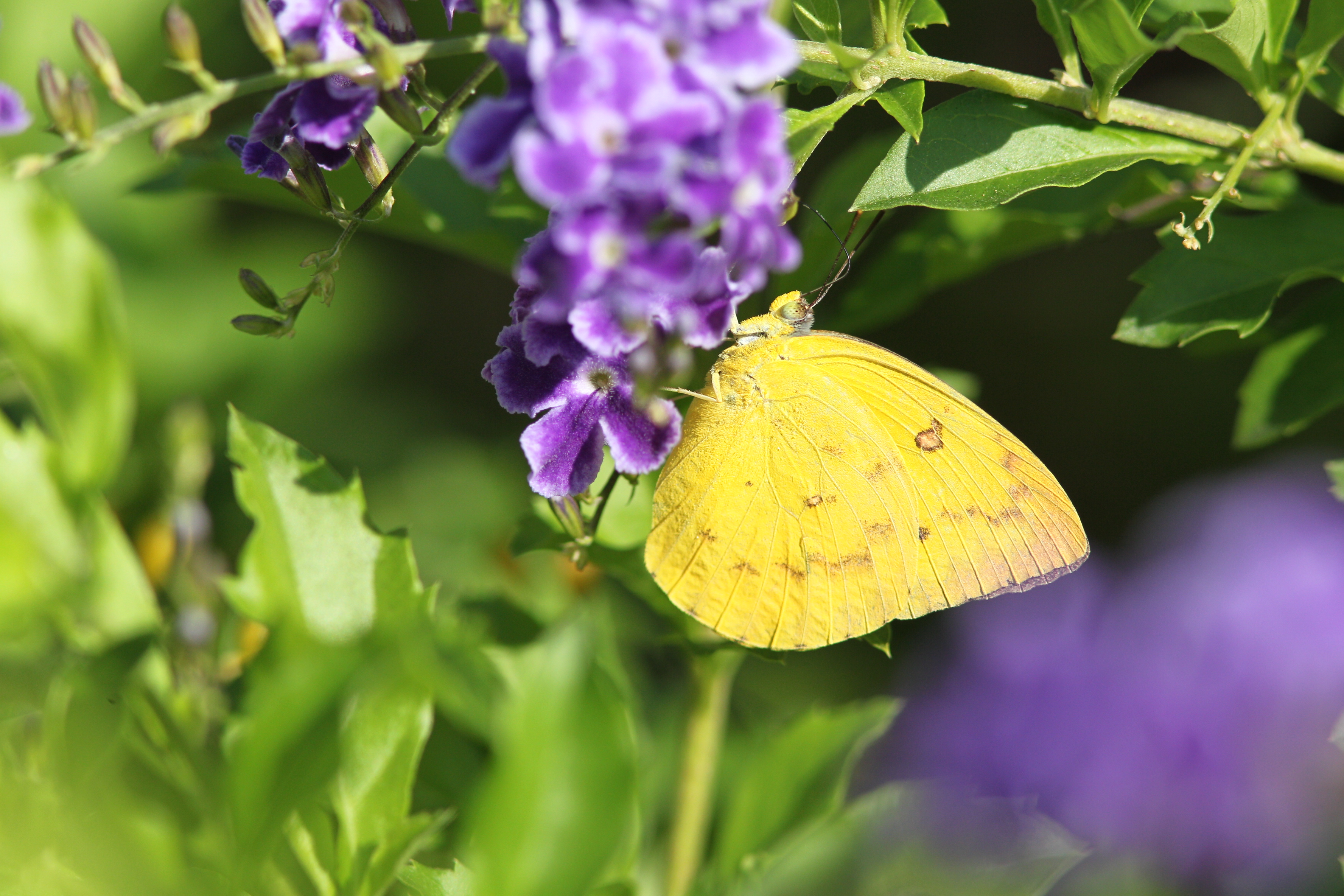
Photo credit: Jason Yong
|
Scientific name: |
Catopsilia scylla |
|
Common name: |
Orange Emigrant |
|
Family: |
Pieridae |
What does it look like?
While in flight, its upperside, which is white with black borders on the forewings and a deep orange yellow on the hindwings, is revealed. The underside, visible while it is perched, is also orange yellow with dark spots and markings.
Host Plant: Golden Shower Tree (Cassia fistula)

Photo credits: Keneric Ng Wei Sheng, NParks Flora&FaunaWeb
Mottled Emigrant
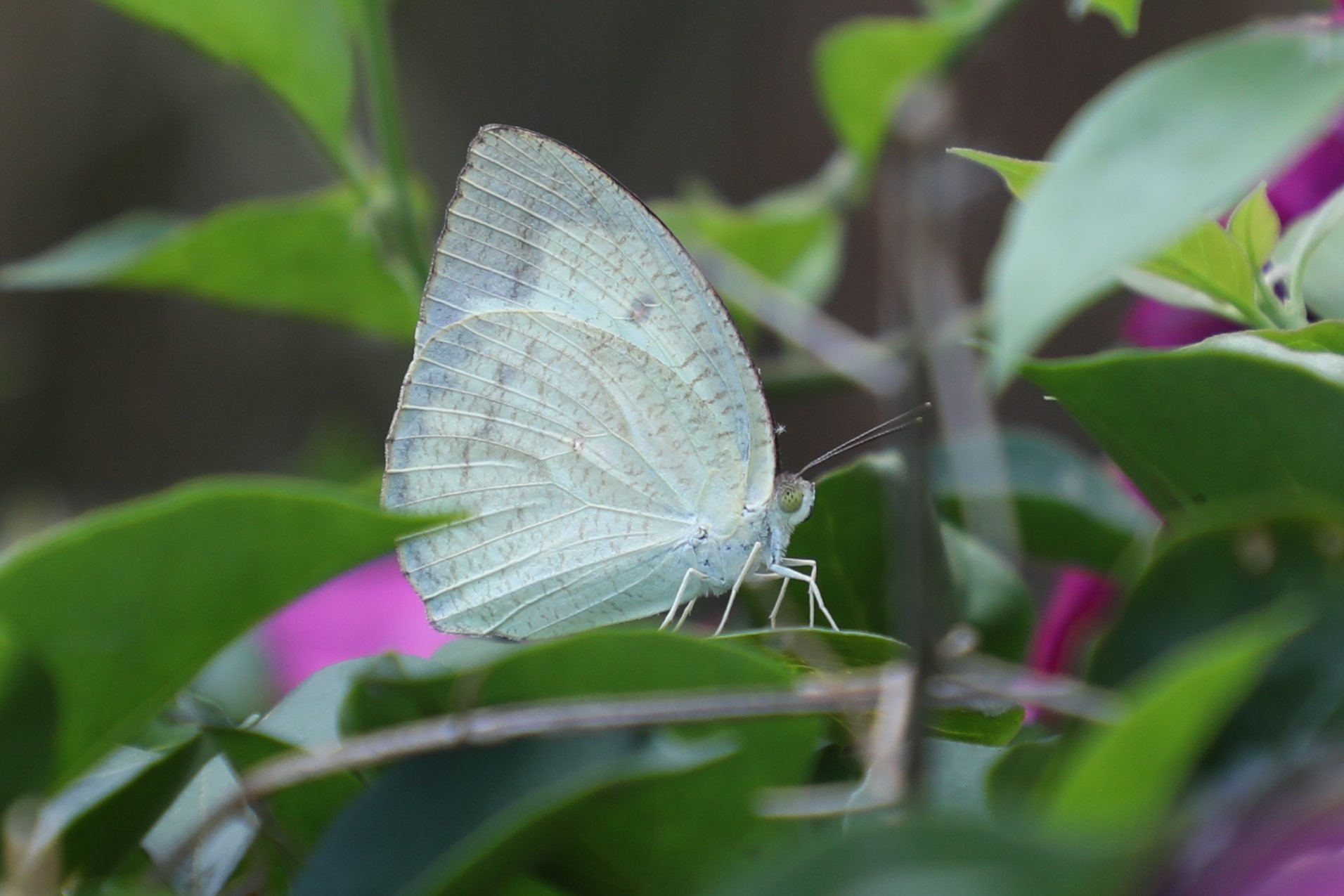
Photo credit: Ruth Tan (NParks)
|
Scientific name: |
Catopsilia pyranthe |
|
Common name: |
Mottled Emigrant |
|
Family: |
Pieridae |
What does it look like?
Its wings are greenish-white on the upperside and the forewing has a black border near the tip. The underside is a slightly darker greenish hue with numerous reddish brown stripes, giving it a ‘mottled’ look, as opposed to the similar-looking Lemon Emigrant, which is usually clean without the mottling. It can be difficult to tell the emigrants apart in flight.
Host Plant: Seven Golden Candlesticks (Senna alata)
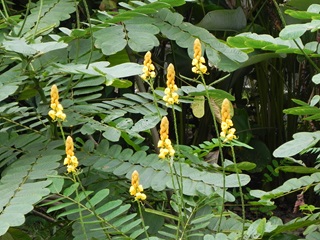
Photo credits: Gary LS Chua, NParks Flora&FaunaWeb
Striped Albatross
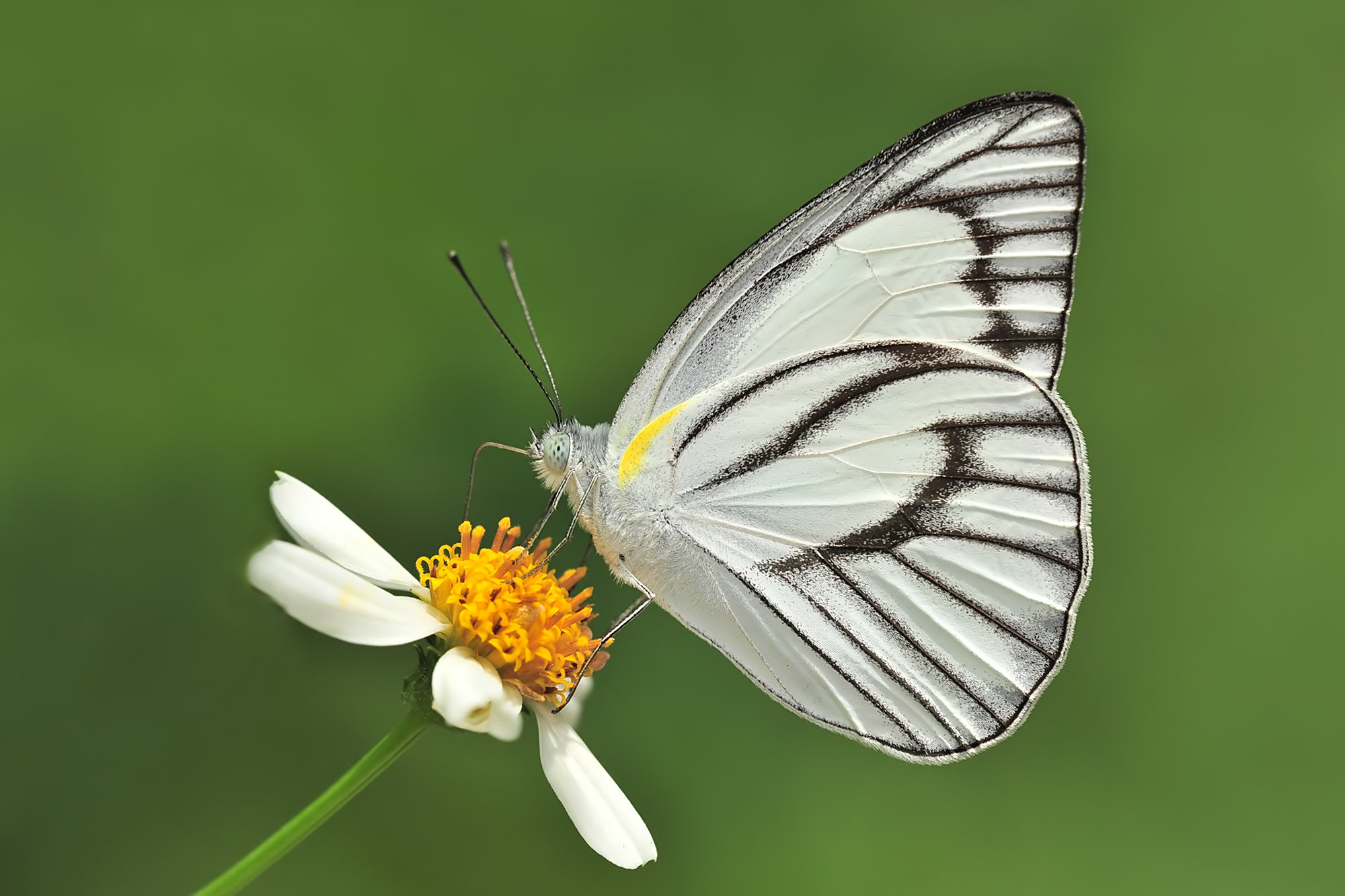
Photo credit: Khew Sin Khoon
|
Scientific name: |
Appias libythea |
|
Common name: |
Striped Albatross |
|
Family: |
Pieridae |
What does it look like?
The Striped Albatross is a fast flyer that frequently visits flowers for nectar during sunny weather. It can be found in open habitats like parks, gardens, grassy fields and the forest fringe. It is fairly common as its host plant can be found as a weed in many parts of Singapore.
Host Plant: Striped Spiderflower (Cleome rutidosperma)
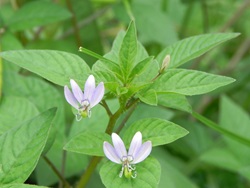
Photo credits: Gary LS Chua, NParks Flora&FaunaWeb
Family Lycaenidae
Grass Blues
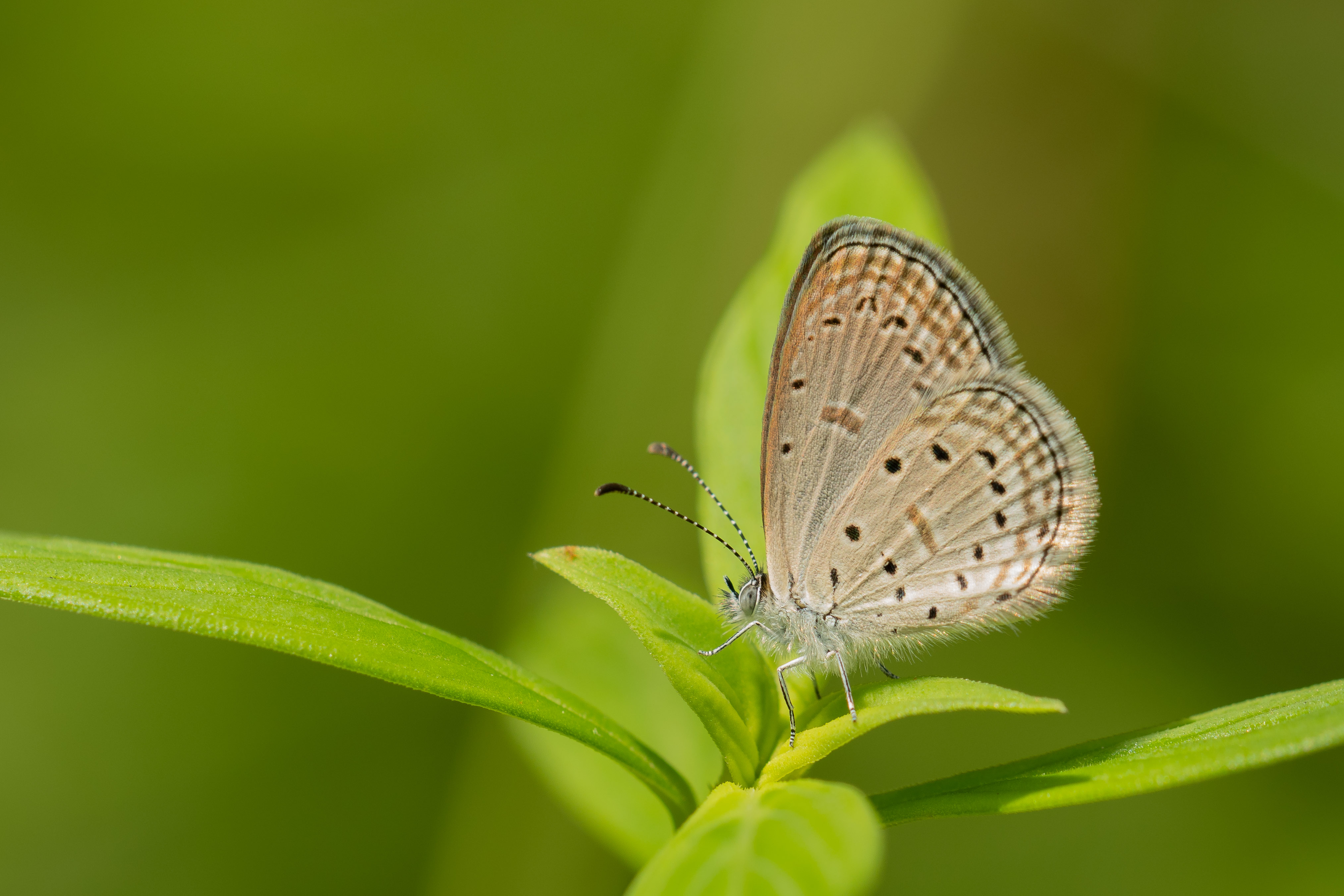
Photo credit: Zhou Boyi (NParks)
|
Scientific name: |
Zizina otis, Zizula hylax, Zizeeria maha |
|
Common name: |
Lesser Grass Blue, Pygmy Grass Blue, Pale Grass Blue |
|
Family: |
Lycaenidae |
What do they look like?
Singapore has three Grass Blue species that are hard to tell apart due to their small size and erratic flight. The male is usually blue above, while the female is brown. Their undersides are typically brownish or whitish grey with dark spots on both wings.
They are common in parks and gardens except for the Pale Grass Blue, which is less often spotted compared to the other two species, the Lesser Grass Blue and Pygmy Grass Blue.
Host Plant: Mimosa/Touch-me-not (Mimosa pudica)

Photo credits: Joyce Foo Ming Yen, NParks Flora&FaunaWeb
Family Papilionidae
Common Mormon
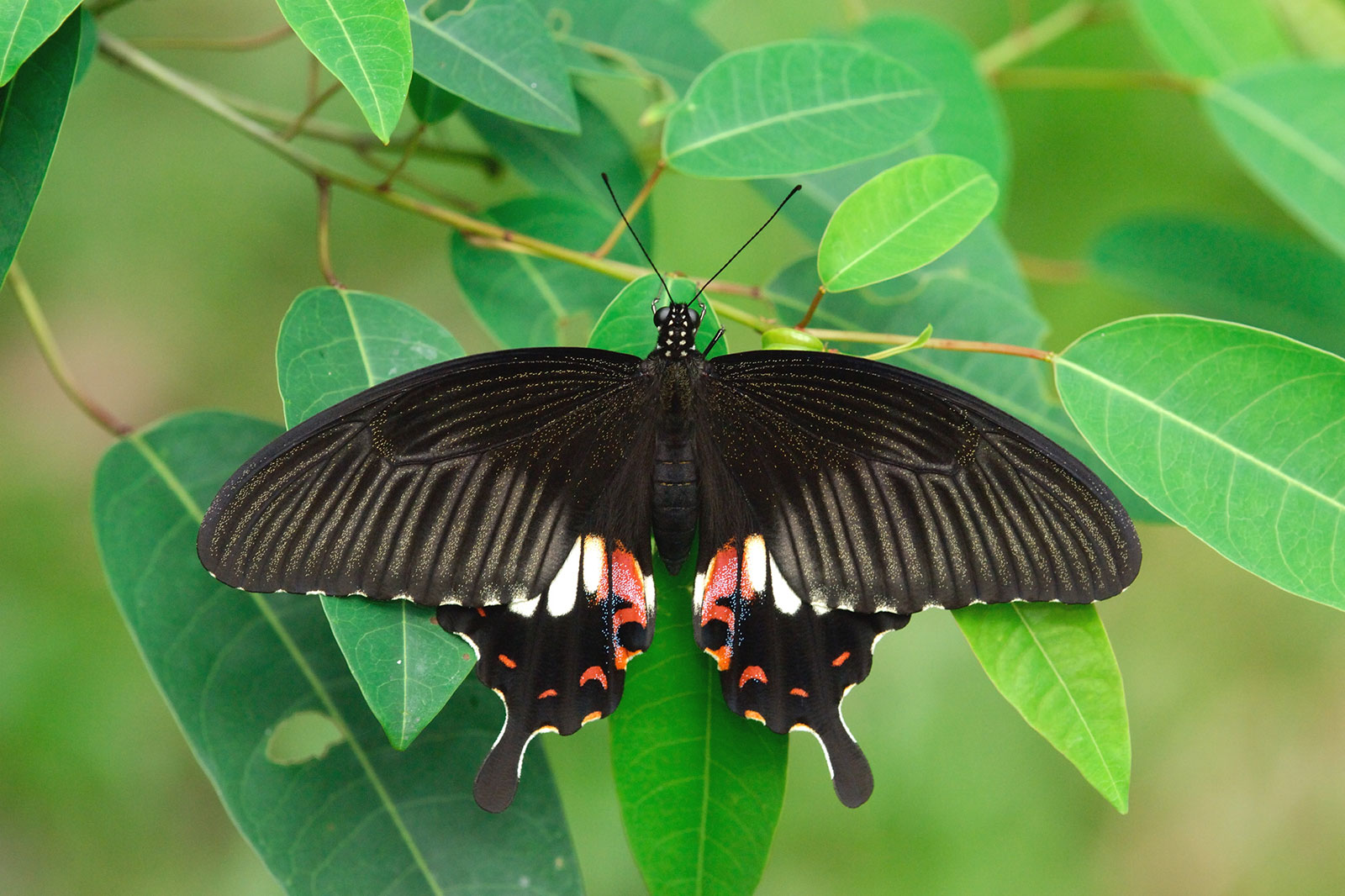
Female. Photo credit: Khew Sin Khoon
|
Scientific name: |
Papilio polytes |
|
Common name: |
Common Mormon |
|
Family: |
Papilionidae |
What does it look like?
The males are black on the upperside with a series of large whitish yellow spots that run across the hindwing to form a band. The females can take several forms – one looks almost indistinguishable from the male while the other mimics the poisonous Common Rose butterfly with red spots near the hindwing margin to protect itself from predators.
Host Plant: Pomelo (Citrus maxima)
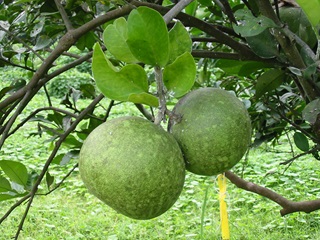
Photo credits: Boo Chih Min, NParks Flora&FaunaWeb
Family Hesperiidae
Chestnut Bob

Photo credit: Soh Kam Yung
|
Scientific name: |
Iambrix salsala |
|
Common name: |
Chestnut Bob |
|
Family: |
Lycaenidae |
What does it look like?
The Chestnut Bob is from a family of butterflies known as Skippers, characterised by their large, heavy bodies and rapid, darting flight. On the underside, its wings are a rich, chestnut brown with a series of small silvery white spots.
Host Plant: Cow Grass (Axonopus compressus)

Photo credits: Boo Chih Min, NParks Flora&FaunaWeb

